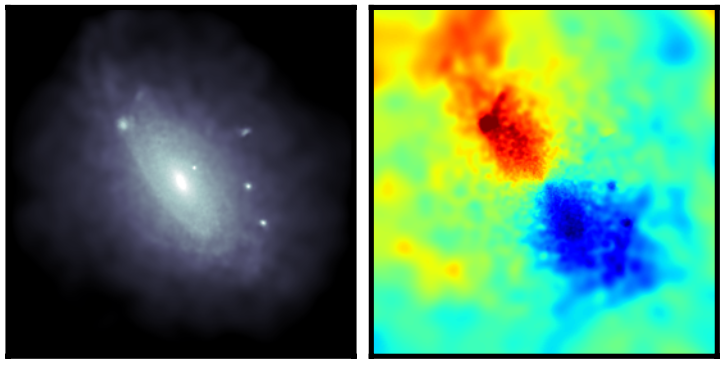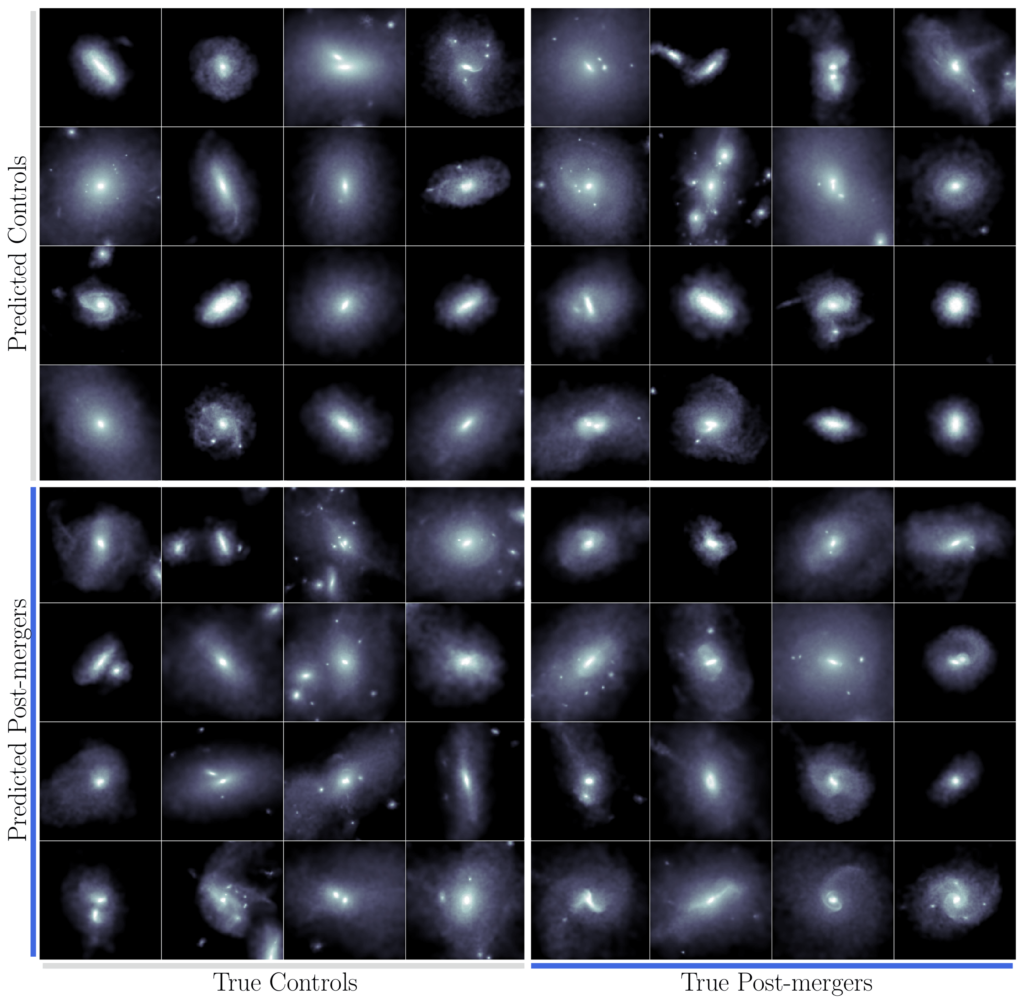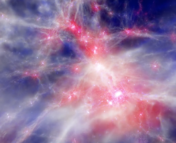Authors: Connor Bottrell, Maan H. Hani, Hossen Teimoorinia, David R. Patton, Sara L. Ellison
First Author’s Institution: Kavli Institute for the Physics and Mathematics of the Universe (WPI), UTIAS, University of Tokyo, Kashiwa, Chiba 277-8583, Japan & Department of Physics and Astronomy, University of Victoria, Victoria, British Columbia V8P 1A1, Canada
Status: Accepted to MNRAS [open access]
Many Mergers Make Meaningful Marks
Mergers between galaxies are some of the most dramatic processes in the universe. A satellite galaxy is ensnared in the gravitational well of another and begins to spiral in. It is stretched out and torn apart as the two galaxies merge to form a new, larger galaxy. As you can imagine, these sorts of events can significantly upset the state of affairs in a galaxy: not only will stellar orbits will be scattered every which way and the resulting descendant galaxy look different from its parents, but it has also been shown that mergers can induce bursts of star formation and produce active galactic nuclei, a region at the center of a galaxy shining extremely brightly across many wavelengths. On top of all that, research has shown that galaxies grow hierarchically, meaning that the most massive galaxies have formed from mergers of smaller ones. In fact, most galaxies have experienced a merger at some point in their long past and many have experienced several (our Milky Way is no stranger to mergers, having experienced one with the dwarf galaxy Sagittarius as “recently” as a billion years ago, and we are on track to merge with our neighbor, Andromeda in the next billion years).
However, despite all that we do know about mergers, we still don’t yet have a clear understanding of the relative effects of mergers on internal processes in the galaxy compared to other dynamical processes that galaxies experience more regularly (such as gas flowing into the galaxy along dark matter filaments, for example). In order to robustly determine the role played by mergers in the saga of galaxy evolution, we need to study large numbers of galaxies that have recently experienced mergers and link these mergers to the conditions that set the stage for the two parents’ dynamic dance. Therefore, automated identification of galaxies experiencing mergers in large observational samples is incredibly useful to beginning such analysis.

To this end, the authors of today’s paper have attempted to place an upper bound on our ability to automatically identify signatures of galaxy mergers by comparing the utility of different observational inputs in machine learning models built with simulated galaxies. Specifically, they compare the predictions made using photometric observations (basically just traditional pictures of the galaxies) to those made with kinematic maps (observations of the directions of stellar velocities in a galaxy; see Figure 1). Are observations made with photometry sufficient to identify mergers? Does knowledge of the kinematic structure help?
Simulated Systems Support Simple Science
In today’s paper, the authors use simulated galaxies from the Illustris: The Next Generation (IllustrisTNG) cosmological simulation. This simulation, which tracks the growth of galaxies from the early universe to the present day, has been shown to produce a statistically representative sample of galaxies when compared to observations, so it is well suited for a study such as today’s. Oftentimes when studying simulated galaxies, to allow for the most direct comparison to observation, scientists will take “synthetic observations” of the data, introducing artifacts that mimic the limitations of our telescopes and the real universe. However, for today’s study, the authors opted against doing this – instead taking idealized (in some sense, “perfect”) observations of the galaxies – so that they could compare the utility of photometry against kinemetry in the most optimal conditions (i.e. they place an upper bound on our ability).

In order to identify the galaxies that had recently experienced a merger versus those that had not (which they define as being at least 2 billion years since the last merger), today’s authors used convolutional neural networks (CNNs). These artificial neural networks are computational systems that attempt to “learn” a result from given data by mimicking the behavior of our brains. As one feeds in the image of the galaxy, be it photometric or kinematic, the image is broken down into a simpler form by passing it through a series of “layers” until the data is processed down to a vector of the most salient “features,” which can then be analyzed by the classifier. The core of the “learning,” then, happens as the model learns how to weight different neurons from layer to layer until it is optimally able to achieve the desired task – in this case, classification of a galaxy’s image as a post-merger image or “control” (no recent merger) image. They apply this technique to their sample of 18,656 galaxies and compare the results from a few different CNN architectures (see Figure 2).

Perhaps Photometry Provides Passable Perspective
The authors of today’s paper compare the results of these neural networks using just photometric data, just kinematic data, and a combined sample that includes both data types, to determine which is optimal for the classification. They evaluate the performance of their model by computing the rate at which it makes mistakes and analyze the properties of the galaxies that are classified incorrectly – either as remnants of mergers when they are actually part of the control group or as controls when they have just experienced a merger (see Figure 3). After all of this analysis, they find that a model trained with just photometry modestly outperforms one trained on just kinematic data and is comparably effective to the one that combines both the observational types. This indicates that, even in this idealized case, the kinematic information does not meaningfully improve the identification of a galaxy as a merger remnant or not relative to photometric data. Evidently, what you see is what you get with these galaxies and we can reasonably well judge them by their covers.
Astrobite edited by Olivia Cooper
Featured image credit: adapted from CBS




